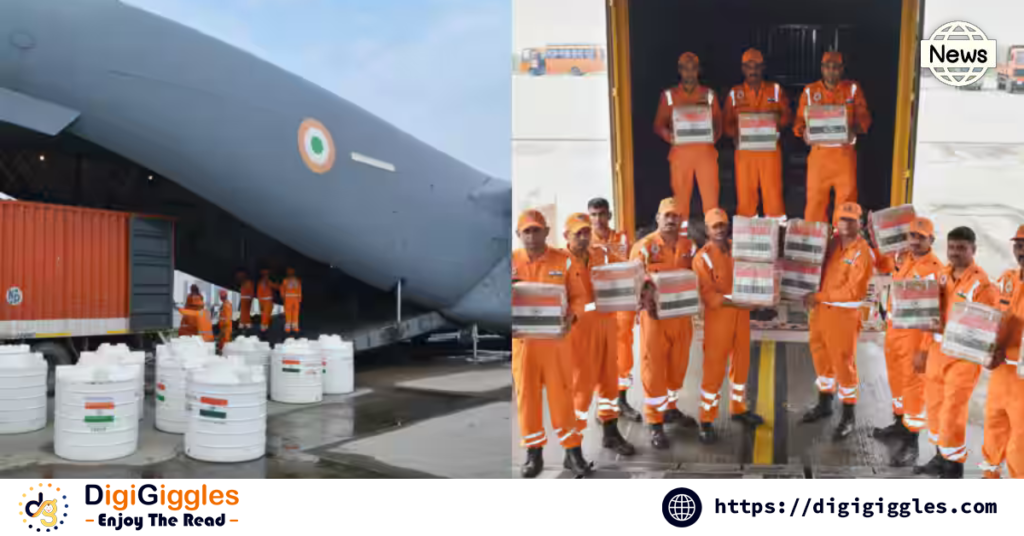
In a significant demonstration of regional solidarity, India has launched “Operation Sadbhav” to provide urgent humanitarian aid to its Southeast Asian neighbors—Myanmar, Laos, and Vietnam—after a powerful typhoon severely impacted them. The Indian government has swiftly mobilized resources, offering relief materials and technical assistance to these nations, which have been grappling with widespread damage due to the natural disaster.
Swift Response to Regional Crisis
The devastating typhoon, which caused heavy flooding, widespread destruction, and loss of life, has left Myanmar, Laos, and Vietnam in dire need of international support. India, under the banner of ‘Operation Sadbhav,’ is stepping in with an empathetic and robust relief effort. This initiative is part of India’s broader commitment to regional stability and mutual assistance in times of need, reinforcing its role as a responsible regional power. Indian officials have confirmed that emergency relief materials, including food supplies, medical kits, and essential household items, have already been dispatched to the affected regions. The aid is being delivered via both air and sea routes, ensuring rapid deployment to the areas most affected by the typhoon. “India stands ready to extend its helping hand to its neighbors in times of distress,” an official statement read, emphasizing the country’s dedication to providing humanitarian support to Southeast Asia.
Operation Sadbhav: Strengthening Ties in Crisis
Operation Sadbhav is not just a reflection of India’s humanitarian values but also a strategic move to deepen its ties with neighboring countries. By stepping up to assist Myanmar, Laos, and Vietnam, India is fostering goodwill and strengthening its diplomatic relationships. This operation also aligns with India’s “Neighborhood First” policy, which underscores the importance of maintaining cooperative and supportive relationships with countries in the region. In recent years, India has consistently shown itself as a reliable partner in times of disaster. From providing earthquake relief to Nepal to extending aid to Sri Lanka during economic and humanitarian crises, India’s swift and effective response to emergencies has been recognized globally. Operation Sadbhav continues this tradition, offering timely assistance to three nations that share close historical and cultural ties with India.
A Long-Term Approach to Aid
Operation Sadbhav goes beyond immediate relief efforts. In addition to providing emergency aid, India is also planning long-term support for rehabilitation and reconstruction efforts in the typhoon-hit regions. Indian technical teams, including engineers and disaster management experts, are being deployed to help rebuild critical infrastructure, restore communication lines, and ensure the timely return of normalcy. The Indian Navy is also playing a crucial role in this operation, ensuring the safe transportation of goods and personnel to the affected countries. In addition, Indian medical teams are being sent to assist local health authorities in treating those injured and preventing the outbreak of diseases that often follow in the wake of natural disasters.
Global Recognition of India’s Role
The international community has lauded India’s swift response to the crisis, with many praising the country’s commitment to humanitarian values. This operation not only cements India’s role as a responsible regional leader but also highlights its growing capacity to manage and respond to large-scale humanitarian crises. As the relief operation continues, it is expected that India’s efforts under Operation Sadbhav will not only alleviate the immediate suffering of the people of Myanmar, Laos, and Vietnam but also strengthen its diplomatic standing and foster deeper cooperation with its Southeast Asian neighbors in the future. In the face of crisis, India once again proves that solidarity and swift action can make a difference, leaving a lasting impact on those in need.